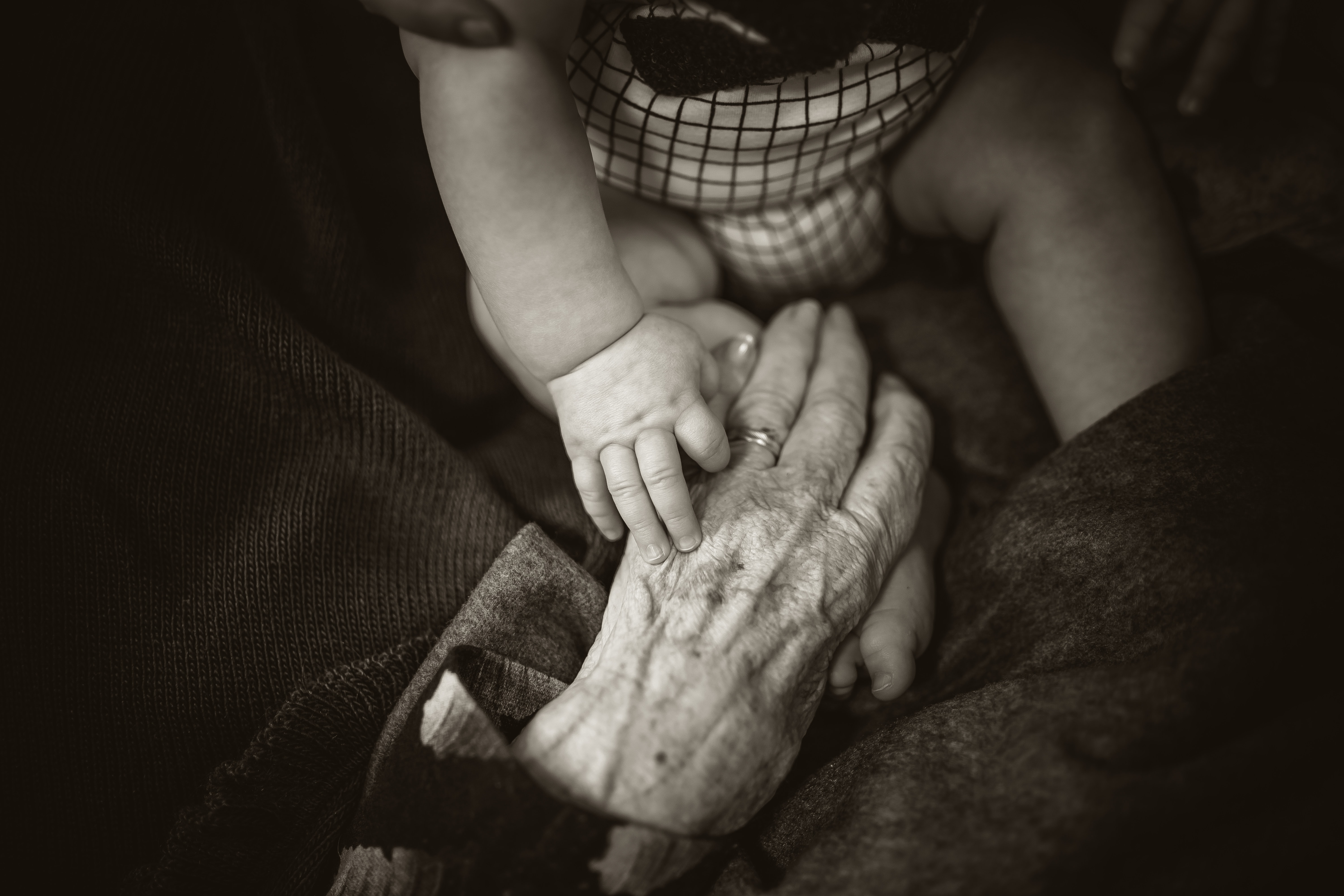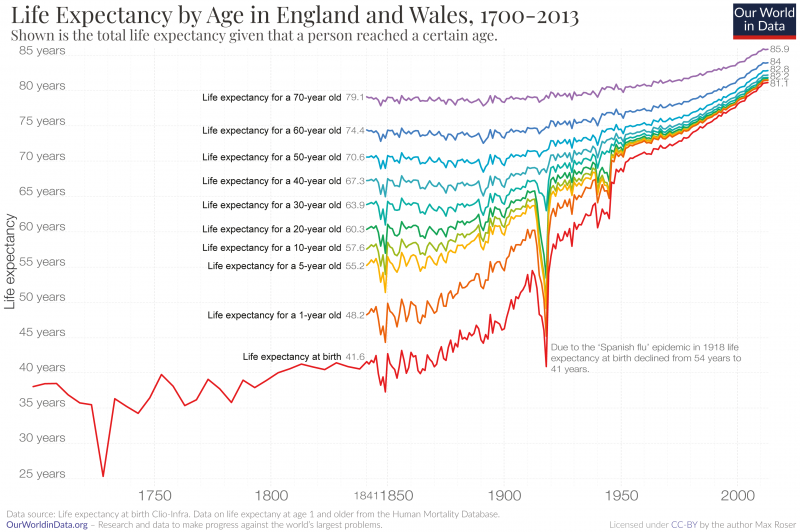
What are your perceptions of ageing in the past? How different do you imagine the lives of people in the past were to yours? (Photo by Rod Long on Unsplash)
There are many curious misconceptions about life in the past, but a particularly common one is the idea that people just didn’t live very long. With the relatively recent improvements to the quality of life we now enjoy thanks to modern medicine, we may be forgiven for assuming that for much of preceding human history, life must have been rather dangerous and short. However, this is not necessarily the case. These often-repeated misunderstandings about life expectancy in the past seem to stem from the limitations of our sources of evidence, as well as misunderstandings of the statistics. Certainly, life in the past was full of risks and many people did die young, but many others would also have lived long, happy lives. Only by continuing to highlight and dispel some of these myths (see Sapiens.org or the BBC for similar discussions, for example) can we change ideas about how similar or different we are to our ancestors, as well as give visibility and credibility to the elderly in our perceptions of past societies.
A lot of misconceptions around how long people lived in the past are based on misunderstandings of the way the data is reported. The UK Office for National Statistics defines ‘life expectancy’ as: “the average number of additional years a person can be expected to live for if he or she experiences the age-specific mortality rates of the given area and time period for the rest of his or her life”. There are a few ways of calculating this, but basically it uses age-at-death data for a population to indicate the mean number of years a person within that population is likely to live at any given age. Therefore, a key aspect of calculated life expectancies is that they are not fixed – a person’s life expectancy can increase throughout their lifespan based on whether they reach certain age milestones.
This is where some confusions may lie – when someone refers to the ‘life expectancy’ of a person, often they are actually only referring to the ‘life expectancy at birth’ – the average age a person may be expected to live to as calculated from the moment they are born. However, this can be heavily skewed in populations with high infant mortality (i.e. those with lots of children dying before the age of one). Without modern medicine, the chances of surviving common causes of child death, such as pneumonia, preterm births, neonatal disorders and diarrhoeal diseases, are significantly reduced. As a result, for much of human history, the average life expectancy at birth was generally quite low, but greatly increased if a person survived the first few years of life. However, this can sometimes lead to confusion between a stated average life expectancy at birth of say, 40 years old, with the idea that most people in a population only lived to 40, dying at an age that we would now consider to be relatively young. This is a common misunderstanding of life expectancy calculations.
Let’s use an example from the UK to illustrate this further. According to data from the UK Office for National Statistics, in 1841, life expectancy for males at birth in the UK was around 40 years old, while in 2020 it was 79 years old – does this mean that 150 years ago, all the men quickly grew up, married, had children, aged and suddenly died at 40? Of course not! Amongst other things, the main difference lies in changes in infant mortality – in 1850, for example, the infant mortality rate was 145.6 per 1000 live births, meaning around 15% of children died in their first year, in 2020 it was 3.9 or 0.4%, hugely affecting the calculations of life expectancy at birth between these two periods. As you can see in the graph below (which shows data for both males and females), in 1841 life expectancy already jumps from 42 years old at birth to 48 years old by 1 years old. If you reached the age of 40, then you were expected to reach at least 67 years old, and if you made it to 70 years old, chances are you were likely to reach 79 years old, and so on. The odds of reaching these older ages may not have been so much in your favor in the past, but there was still the opportunity for some people to achieve considerable ages.

Life expectancy of males and females by age in England and Wales, 1700-2013. The coloured lines show life expectancy at certain ages through time, illustrating general improvements in life expectancy at all ages, although the improvements get smaller at older ages. This graph highlights the largest improvements have been in life expectancy at birth, rising from 41.6 years in 1841 to 81.1 years in 2013 (Figure by Max Roser for Our World in Data)
A second possible cause of misconceptions of ageing is the interpretation of the evidence that we have available. Life expectancy, ageing and age-at-death in the past have been studied through various types of evidence including historical documents, artistic depictions and of course, archaeological human skeletal remains. However, these sources all have their biases. Documents may only record certain sectors of society and artists may choose to depict people in their perceived ‘prime’, giving the impression that there were few elderly people in the past. Human skeletal remains excavated from archaeological sites are generally the most direct evidence we have for understanding patterns of ageing.

For older individuals, archaeologists can use signs of degeneration in skeletal joints, particularly in the pelvis, to make broad estimations of age (Photo by De an Sun on Unsplash)
Archaeologists can use features on human skeletons to estimate age-at-death. In children, this is based on stages of skeletal and dental development. Childhood development is fairly well documented and so if the skeleton of a child is well preserved, archaeologists can generally arrive at an age-at-death estimation that may only span a few months or years. Estimating the age-at-death of an adult from their skeleton, however, is largely based on signs of ‘wear and tear’ that generally increase as a person gets older. This is much less accurate as this can be affected by many factors such as genetics, sex, weight, activity and injuries, and so the potential for variation is much greater. This means that estimations of the age-at-death of adults in the past are broad, with estimates typically spanning 10 or more years. The limitations of these methods for estimating the age of older adults are where the real problems lie for understandings of ageing. After around 40-50 years old it is generally much more difficult to categorise the signs of degeneration, and so many skeletal estimations of age at death of older individuals can only be reported as ‘Mature Adult (greater than 45 years old)’ or ‘Old Adult (greater than 60 years old)’. Unfortunately then, if a person died in their mid-40s or later, current methods often cannot provide much more detail than that. This uneven resolution in age estimations across the lifespan gives us a somewhat skewed impression of age distributions in the past and means that the true number of who we would perceive as ‘elderly’ are masked within broad older/mature adult categories.
The misconception that all people in the past had short lives and died young can lead to a sense of disconnection from those who have come before us. This can make us feel like we cannot relate to their life experiences and can add yet another veil of mystery to what it may have been like to grow up say, 1000 years ago. It is clear that infant mortality was certainly higher, but once people entered adulthood, they still had a reasonable chance of reaching older ages. While it is more difficult to identify these older individuals in the archaeological record, they are certainly there, showing us that the experiences of people in the past were perhaps not so extremely different to ours.







